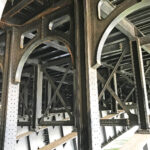Jet Bridge Blues
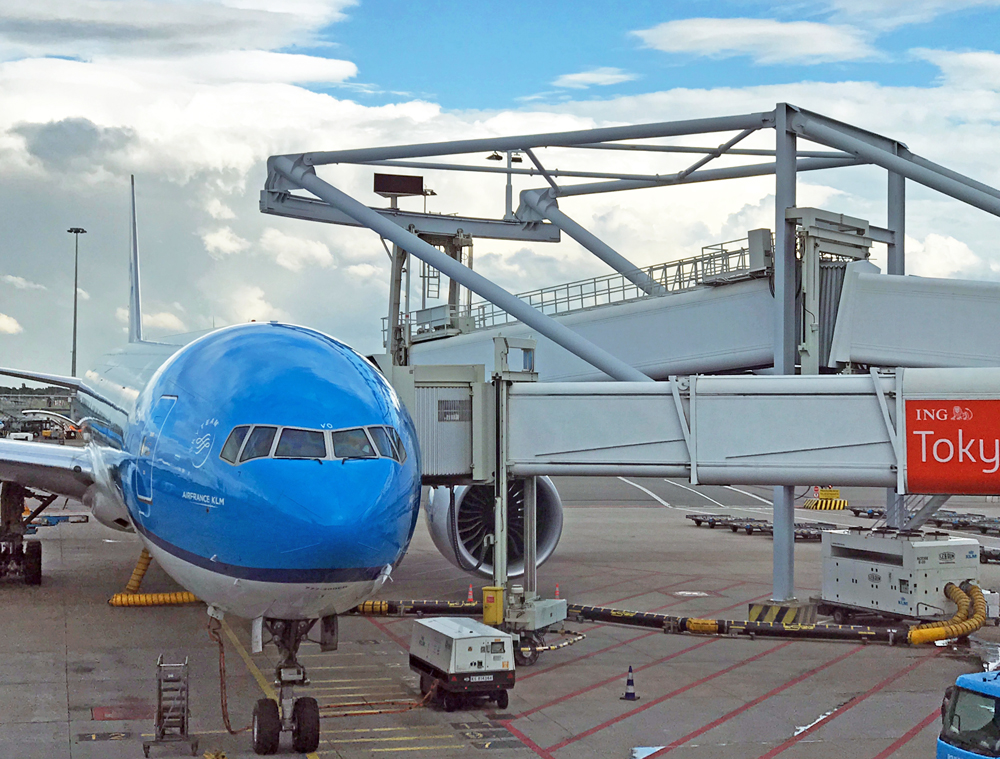
May 15, 2023
PHOTOS BY THE AUTHOR.
THE JET BRIDGE, that strange, too-often troublesome umbilicus connecting terminal to fuselage.
The other day I was stuck on a regional jet for twenty minutes because the gate agent couldn’t get the damn thing into the right position. If only I had a dollar for every time this has happened. And much of the problem, I think, is that these devices are so monstrously over-engineered. Take a look at the typical jet bridge. The things are enormous. They must weigh hundreds of thousands of pounds and cost millions of dollars.
(Note: I’ll be using the generic term rather than “Jetway,” which is a brand.)
That wayward bridge at JFK was twice the size of the plane. As the agent fumbled with the thing, it looked like she was trying to steer a battleship. Hydraulic arms flexed and groaned, machinery wailed, lights flashed and bells rang. Finally the tires began to turn — like the wheels of those huge mobile barges that NASA used to position the Saturn rockets. All of this so that fifty people could walk the negligible distance from the aircraft to the terminal.
I realize the bridges are multifunction. The air conditioning and power connections used by the plane during its downtime are part of the assembly. But do they need to be so big and heavy, with all of this Rube Goldberg machinery? It’s just a gangway for crying out loud. You see simpler, lightweight, often glass-sided jet bridges in Europe and elsewhere around the world (see the following photo), but here in the U.S. we rely on these ponderous, lumbering contraptions.

Of course, I’m opposed to jet bridges on principle. I prefer the classic, drive-up airstairs. Some of the international stations I fly to still employ those old-timey stairs, and I always get a thrill from them. There’s something dramatic about stepping onto a plane that way: the ground-level approach along the tarmac followed by the slow ascent. The effect is like the opening credits of a film — a brief, formal introduction to the journey. The jet bridge makes the airplane almost irrelevant; you’re merely in transit from one annoying interior space (terminal) to another (cabin).
Plus, it takes me back to my first-ever ride on an airplane. It was 1974 and I was eight years-old, and I vividly remember walking up the stairs to that American Airlines 727. A photo snapped by my mother immortalizes the moment…

I know, the bridges are important for passengers with limited mobility or who rely on wheelchairs, and for avoiding inclement weather. But the old-style stairs worked well for decades, and I see no reason they couldn’t still. Hydraulic lifts could be used for wheelchairs while the rest of us climb the stairs. I’m convinced this would be a faster and more efficient method. Ryanair is one carrier that agrees with me. The European budget giant relies on stairs, not bridges, at most of its stations.
But if we’re going to rely on jet bridges, we ought to have not only simpler ones, but more of them. Airports outside the U.S. routinely board and deplane a widebody jet through multiple doors using multiple bridges — at least two, and sometimes even three. This makes a massive difference in how long it takes to move hundreds of people, and their hundreds of carry-ons, between the terminal and the cabin. Here at home it takes 45 minutes to get a few dozen people onto a regional jet, and it’s chaos the entire time, while in Asia I’ve seen 500 passengers board an A380 in under thirty minutes. Dual-bridge boarding does exist in the United States, but it’s uncommon.
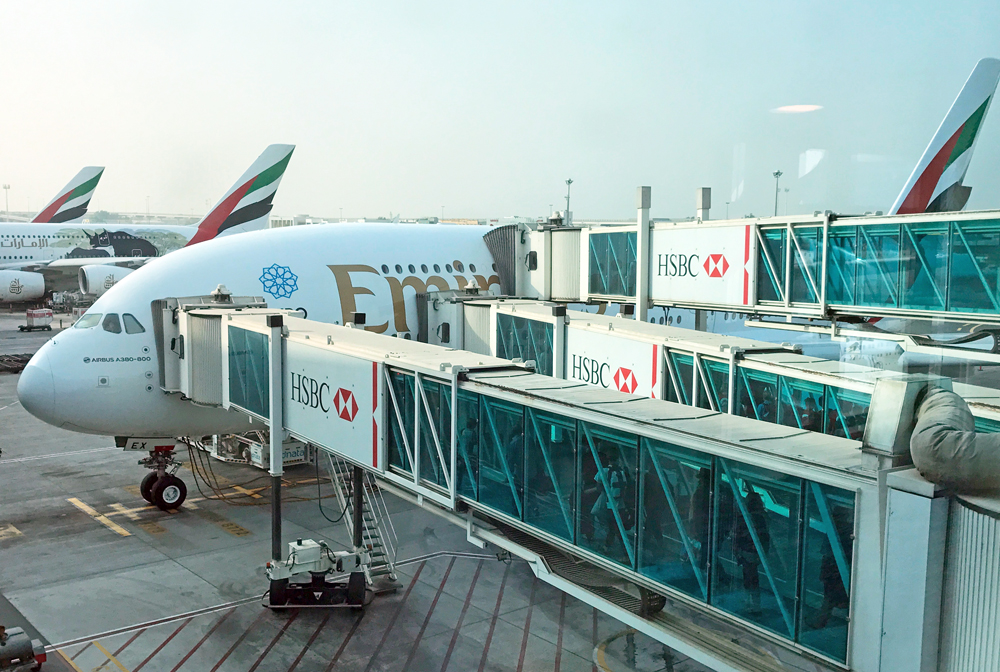
In Amsterdam, KLM boards some of its flights using forward bridges, plus a unique, over-the-wing bridge that connects to the rear fuselage. These overwing bridges are by no means lightweight, slung from a superstructure that looks like something you’d see in a shipyard where they build aircraft carriers, but they do make getting on and off the jet quicker and more pleasant.
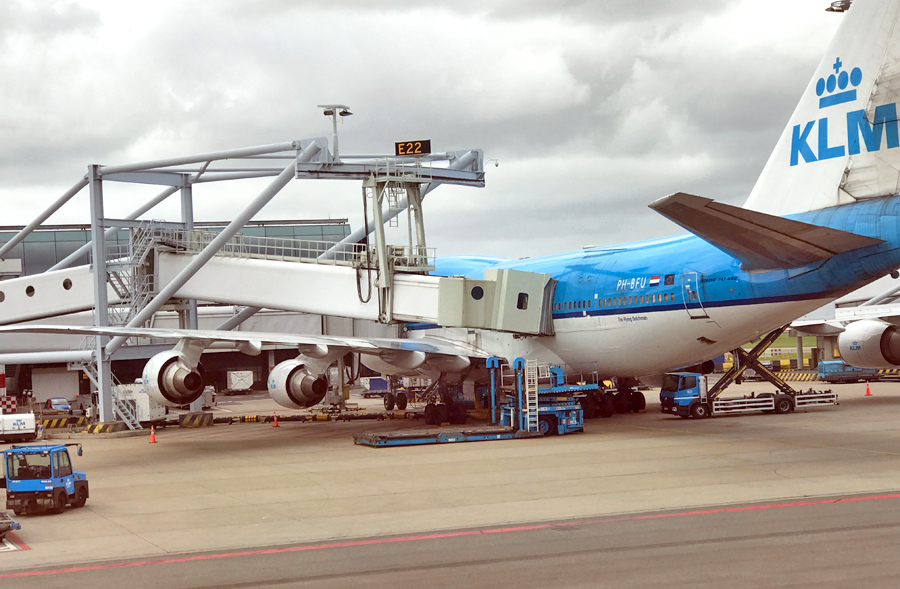
Another reason that boarding is more efficient in other countries, Asia especially, is that carriers there tend to use bigger planes. In Asia, even a 45-minute hop is often aboard a 777 or A330. Widebody planes, with dual aisles and all-around greater spaciousness, are by their nature easier to get on and off. In the U.S., aircraft size has been steadily shrinking over the past three decades. More people are flying than ever before, it’s true, but we’re doing it on smaller planes: regional jets, A319s, 737s and the like. The reasons for this are a subject for another time, but the narrow aisles and limited bin space mean longer boarding and deplaning times.
A few years back, my friend Harriet Baskas penned this interesting story for USA Today on the history of the jet bridge.
In closing, just an observation…
Look around, and it seems that 90 percent of the world’s jet bridges are emblazoned with logo of HSBC.
I’m not sure this advertising strategy has been all that effective, however, because although millions of people see these four letters every day, relatively few of them know what they’re looking at. I did a little impromptu research, asking several colleagues if they knew what HSBC was. Not one of them could tell me.
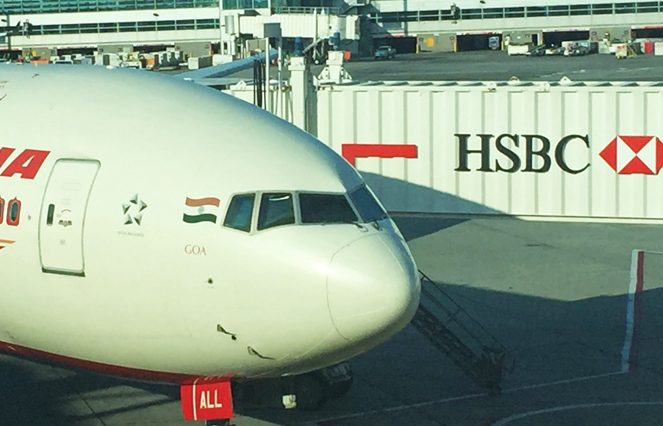
HSBC is a British bank, originally founded in Shanghai and Hong Kong. The letters stand for “Hong Kong and Shanghai Banking Corporation.” It’s one of the ten biggest banks measured by assets. The company pays tens of millions of dollars every years to airport authorities the world over — mostly at major international hubs — for the rights to put its name on boarding bridges.
In 2012, HSBC was hit with a $1.9 billion fine for laundering money on behalf of drug cartels and terrorist groups — carrying on a tradition of questionable practices that goes back generations, apparently, to the days of the opium trade.



